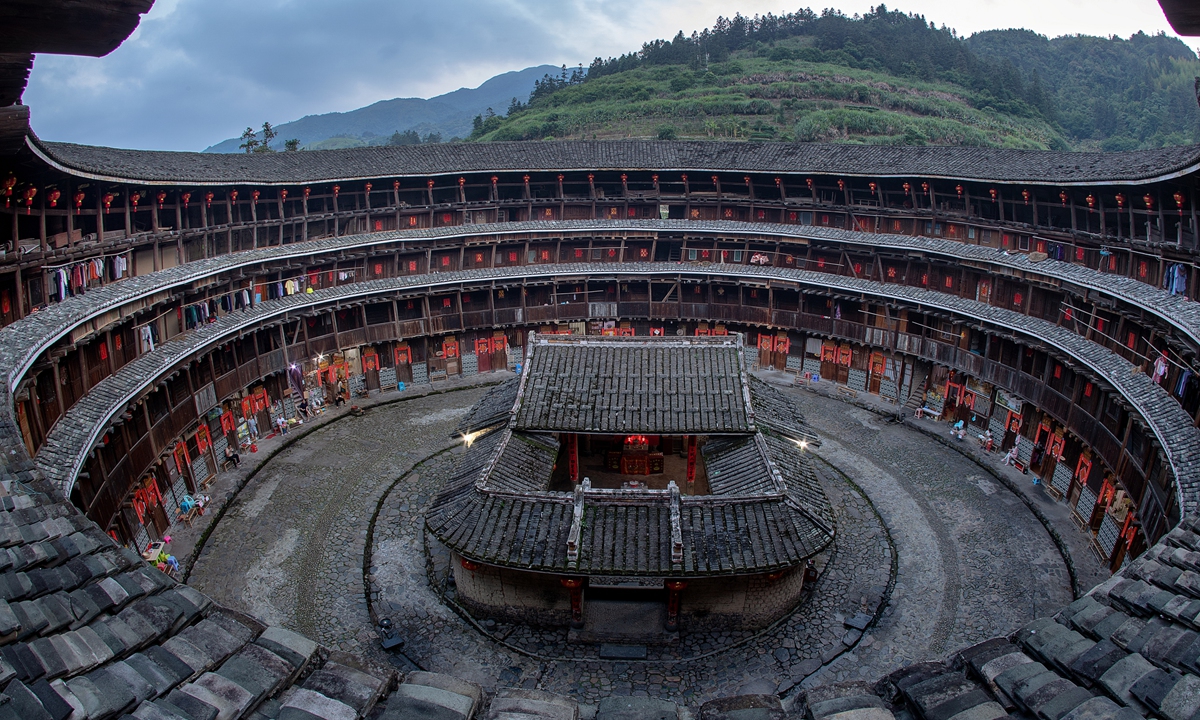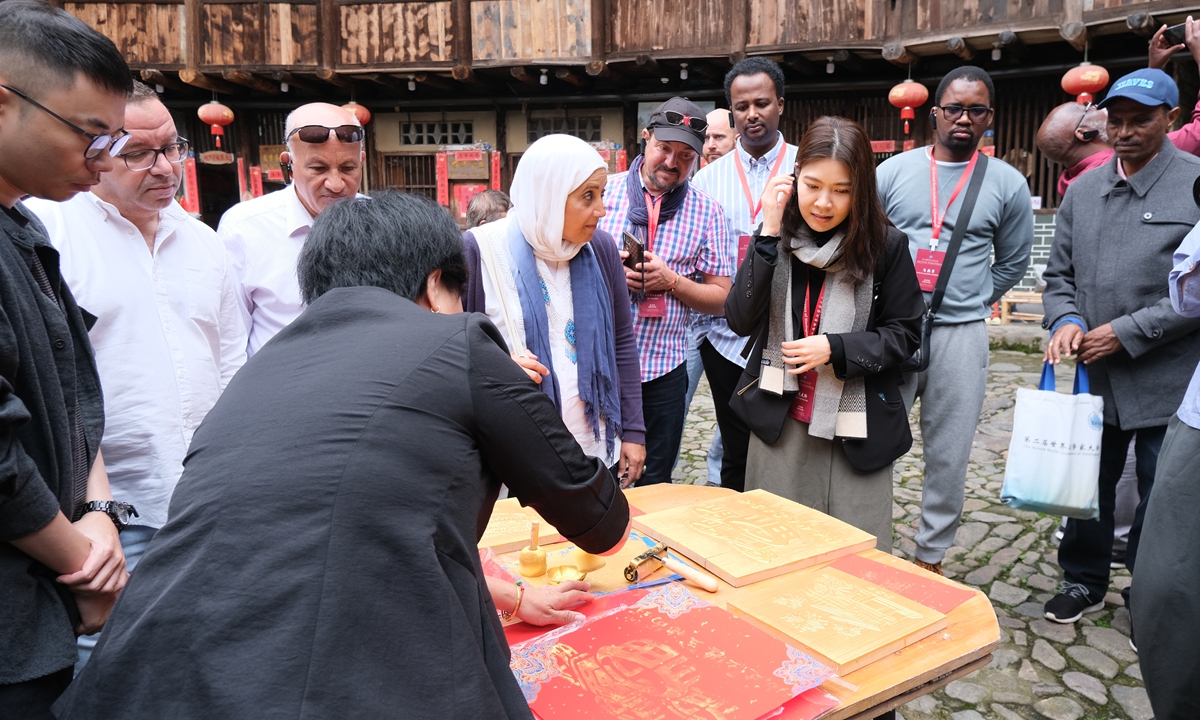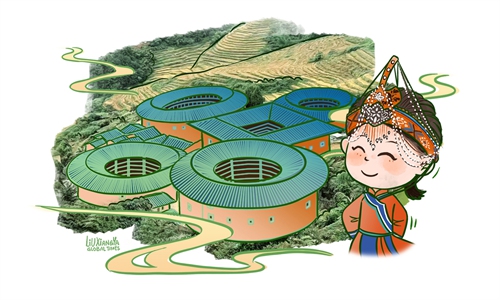ARTS / CULTURE & LEISURE
Discover the charm of East China’s Zhangzhou
From tulou to tea

The view of a tulou building in Nanjing, East China's Fujian Province Photo: VCG
Located in East China's Fujian Province, Zhangzhou is a city where history, culture, and modern development coexist harmoniously. With over 1,300 years of history, it has been recognized as a National Historical and Cultural City. Known for its rich cultural heritage and traditions, it's a fascinating destination that has a lot to offer to visitors.
Architectural marvels
Zhangzhou's story began during the Tang Dynasty (618-907), when it was established as an administrative region. Its location along the Jiulong River made it a key trade hub, facilitating cultural and economic exchanges between areas in inland China and the coastal regions. Over centuries, Zhangzhou developed a distinct cultural identity shaped by these interactions, leaving behind a legacy of architecture, art, and traditions that still thrives today.
One of the most iconic symbols of Zhangzhou's heritage is the tulou building, a type of large, fortress-like earthen building. In Zhangzhou, over 15,000 tulou buildings are preserved.
Traced back to the Song (960-1279) and Yuan (1279-1368) dynasties, Fujian tulou is a type of Chinese rural dwelling used by the Hakka people in the mountainous areas in Fujian Province. These structures, often circular or rectangular, were built to house extended families and protect them from natural disasters and bandits. Tulou buildings are remarkable for their thick earthen walls, which provide insulation and security, and their ingenious designs that encourage communal living while maintaining privacy.
The tulou's cultural significance earned them a place on the UNESCO World Heritage List in 2008. This recognition has brought international attention to their historical value and sparked efforts to preserve them. Visitors to these sites often marvel at the harmony between function and beauty, as well as the communal spirit they represent.
At the tulou scenic area, visitors can get a wide selection of delicately designed fridge magnets with tulou elements. At the ink rubbing workshop, with the guidance of the workshop leader, visitors can also take home a one-of-a-kind, self-made souvenir.
Starting by placing a sheet of red paper - a color that symbolizes luck and joy in Chinese culture - over a woodcut of a tulou, using golden ink and a roller, each participant can create their own stunning print of the tulou. The hand-on activity not only provides a glimpse into traditional craftsmanship but also allows everyone to take home this unique piece of memory of Zhangzhou.
"China's civilization is like a river that keeps flowing. Unlike other ancient civilizations, it has never been interrupted," Abdel Aziz Hamdi, a sinologist and head of the Chinese language department at Al-Azhar University in Egypt, told the Global Times during his visit to the tulou scenic area.
"China hasn't given up its traditional culture while advancing its social and technological development. That's what has contributed to the Chinese civilization we see today, a combination of tradition and modernity," he said.
Zhangzhou's cultural heritage extends far beyond its architecture. The city is a vibrant center for traditional folk arts that have been passed down through generations. Among the most celebrated is the glove puppet theater, a unique performance art that combines intricate puppetry, vivid storytelling, and traditional music.

Visitors gather at an ink rubbing workshop where they can make a print of the tulou in Zhangzhou on October 29, 2024. Photo: Bi Mengying/GT
Traditions continue to evolve
Another cultural treasure is Xiang Opera, which originated in Zhangzhou. This regional opera is known for its expressive acting, poignant melodies, and deep connection to the linguistic and cultural identity of southern Fujian. Xiang Opera remains an important part of local celebrations and festivals.
These art forms are not just relics of the past - they are living traditions that continue to evolve. Through preservation efforts and modern adaptations, Zhangzhou ensures that these cultural treasures remain relevant and accessible to future generations. Initiatives such as incorporating traditional elements into contemporary performances, hosting educational workshops, and leveraging digital platforms have breathed new life into these ancient practices.
Xiang Opera is now being introduced to audiences far beyond its regional roots. Performers are embracing modern themes to engage a broader audience, making Xiang Opera more accessible to both locals and visitors.
Meanwhile, as infrastructure steadily improves and local authorities prioritize cultural heritage preservation, Zhangzhou has been attracting an increasing number of international visitors. In recent years, the Nanjing Tulou scenic area has played a key role in poverty alleviation by leveraging tourism projects. Villagers have taken an active role in designing and implementing targeted programs, leading to the establishment of eco-farms, rural guesthouses, and restaurants throughout the village.
By blending tradition with modernity, Zhangzhou demonstrates how cultural heritage can remain a dynamic part of society. These efforts not only honor the past but also ensure that these art forms continue to inspire for generations to come.
No visit to Zhangzhou is complete without exploring its culinary scene. Local specialties such as oyster pancakes, taro noodles, and five-spice meat rolls are among the must tries. The city's culinary heritage is also celebrated in its tea culture. As one of the birthplaces of oolong tea, Zhangzhou offers a special opportunity for visitors to sample some of the finest teas while learning about the centuries-old traditions behind its cultivation and preparation.
Whether you are exploring tulou, marveling at a puppet show, or savoring a bowl of taro noodles, Zhangzhou invites you to immerse yourself in its story. The city welcomes the curious, inspires the artistic, and attracts all who visit. It's surely a destination where the past and the future converge in harmony.


